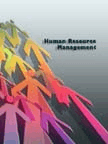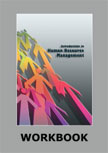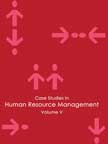Starbucks' Human Resource Management Policies and the Growth Challenge
|
|
ICMR HOME | Case Studies Collection
Case Details:
Case Code : HROB068
Case Length : 12 Pages
Period : 1987 - 2005
Pub Date : 2005
Teaching Note : Available
Organization : Starbucks
Industry : Coffee Retailing
Countries : USA
To download Starbucks' Human Resource Management Policies and the Growth
Challenge case study
(Case Code: HROB068) click on the button below, and select the case from the list of available cases:

Price:
For delivery in electronic format: Rs. 400;
For delivery through courier (within India): Rs. 400 + Rs. 25 for Shipping & Handling Charges
» Human Resource and Organization Behavior Case Studies
» HRM Short Case Studies
» View Detailed Pricing Info
» How To Order This Case
» Business Case Studies
» Area Specific Case Studies
» Industry Wise Case Studies
» Company Wise Case Studies

Please note:
This case study was compiled from published sources, and is intended to be used as a basis for class discussion. It is not intended to illustrate either effective or ineffective handling of a management situation. Nor is it a primary information source.
Chat with us

Please leave your feedback

|
|




<< Previous
Background
|
Starbucks was founded in 1971, by three coffee lovers, Gordon Bowker (Bowker),
Jerry Baldwin (Baldwin), and Zev Siegl (Siegl). Baldwin and Bowker were fond of
Peet's coffee, which they drank when they were at college in San Francisco. Even
after they moved to Seattle, they continued ordering Peet's coffee by mail.
On one such occasion, Bowker got the idea of opening a coffee shop in Seattle to
supply world-class coffee to Seattle residents. He talked it over with Baldwin
and his neighbor Siegl, and together, the trio set up the first Starbucks store
in Seattle. (Starbucks originally sold only whole bean coffee. The coffee bar
concept evolved much later).
|

|
Starbucks grew at a slow pace initially and at the end of its first decade
(1981), there were four Starbucks stores. The partners also opened a
roasting plant in Seattle. In 1981, Howard Schultz (Schultz), a housewares
company executive from New York, became interested in Starbucks.
He went to Seattle to meet the partners and learn more about the business.
What he saw of Starbucks interested Schultz immensely, and he soon convinced
the partners to hire him in a marketing position at the company.
|
|
Schultz saw the potential of serving ready-to-drink coffee by the
mug, and suggested introducing the concept in the US. The partners
however, were reluctant to extend their brand into espresso drinks,
and it took Schultz a year to convince them of the potential of the
idea.
Eventually, Starbucks started serving espresso coffee in 1985, when
it opened its sixth store in downtown Seattle. The concept was an
immense success and within two months, the store was serving over
800 customers a day (espresso sales were much higher than sales of
the best selling whole bean coffee). |
Schultz was keen on extending this concept to the other
stores as well, but Baldwin believed that selling beverages distracted the
company from the core business of selling top quality, whole bean coffee.
Eventually, in 1985, Schultz left Starbucks and started his own coffee bar
called Il Giornale. Bowker and Baldwin, along with a few private investors
provided financial backing for this venture, and Starbucks supplied the coffee
beans.
Schultz had opened Giornale in partnership with Dave Olsen (Olsen), who was
previously the owner of Café Allegro, a coffee bar. Olsen and Schultz had a
strong partnership as Schultz took care of the external aspects of the business,
while Olsen brought his experience to the making and serving of coffee.
In 1987, Baldwin, Bowker and Siegl decided to sell Starbucks, with its six
retail stores, roasting plant, and the corporate name. Schultz, along with a
group of local investors bought Starbucks for $3.7 million. Eventually, he
changed Giornale's name to Starbucks Coffee Company, and merged the two
businesses.
Starbucks grew rapidly under Schultz's leadership. During the late 1980s, the
company expanded into Chicago, Vancouver and Portland, and Schultz promised
investors that Starbucks would have 125 locations by the early 1990s...
Excerpts
>>
|
|









